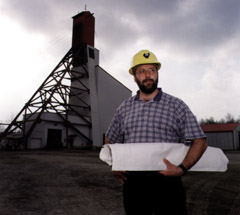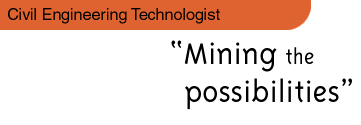 |
An underground mine is like an immense ant hill, with a network
of human-scale tunnels, shafts, and galleries. Before the ore can
be extracted, however, the environment must be made more hospitable
for humans by circulating oxygen into all the nooks and crannies.
Air pumped to the surface passes through a ventilation system before
being filtered and vented outside.
Marc knows all the operations like the back of
his hand. "The underground environment is unique," he explains.
"Nothing looks the way it does above ground. It's like working
in a 50-storey building dug out of the rocks! In mining, fresh
air is essential to provide sufficient oxygen, and remove dust."
One of Marc's main jobs is to arrange for the
installation of air conduits. And that's no small matter, considering
that the Beaufor Mine (a gold mine) has 20 levels, and a total
depth of 734 metres.
"First of all, you assess how long the galleries
are to establish the distance to be covered by the conduits. Then
you choose the most suitable fan for specific requirements and
the diameter of the conduits. Once the electricians have completed
the installation, you make sure the fan is properly adjusted and
you're getting the oxygen output you need."
Marc wears
several hats at work - including a hard hat! He's also in charge
of mine planning, which involves working with geologists to determine
where and how the next gold deposits will be extracted from underground.
"The objective
of mine planning is to decide on new developments. You have to
plan where the galleries and openings will go to provide access
to the ore that has not yet been exploited. Next, you need to
predict how long it will take to get from the mineral zone to
the openings, for example. All this helps us figure out when the
site will be ready," Marc says.
|
 |


